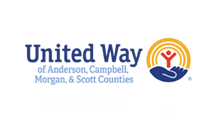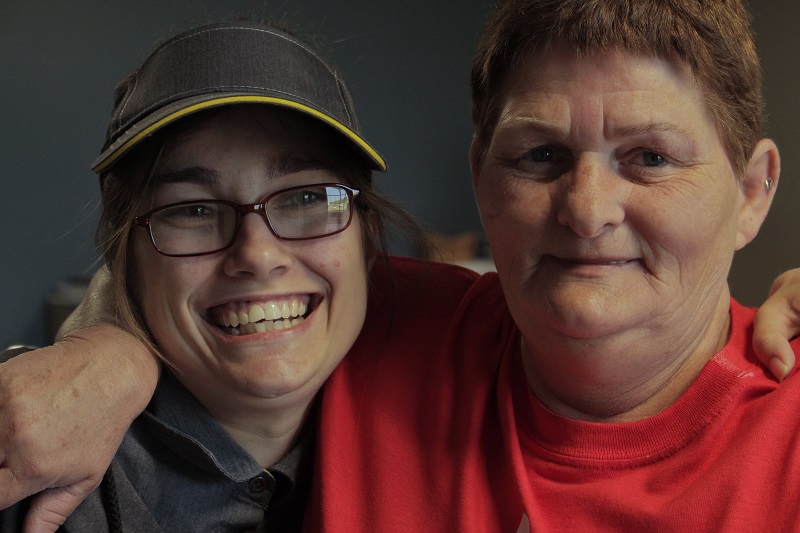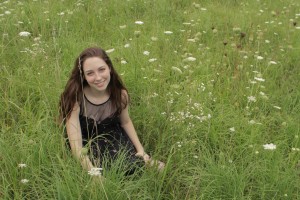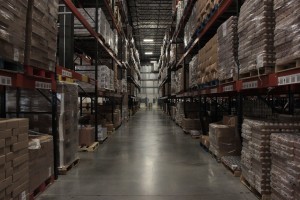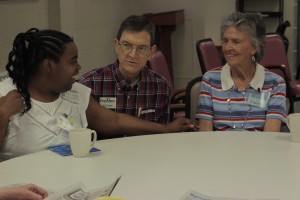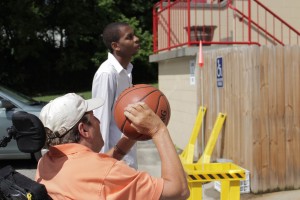My name is Sarah, and I’m the summer intern.
Your brain has likely already flown to coffee trips and making hundreds of copies and, you know, other intern stuff. So I’ll go ahead and say that those things haven’t at all defined my time with United Way (and hopefully I’m not asking for trouble by pointing it out).
I came here looking for marketing and communications experience with a non-profit, and I’ve found that. Betsy and Naomi have let me work on projects that are relevant to my major—advertising, by the way. They’ve let me work on projects that will actually go out into the world and serve a purpose and that don’t have to be labeled ‘Speculative Ad’ in the caption. That’s been awesome, to say the least.
If that was all I got out of this internship, relevant experience, it would be enough. I would go back to school and tell my professors and my friends that the internship went well, and that I’m glad I did it.
But the best parts about this internship have nothing to do with building a resumé.
The first task I was given on my first day at the United Way office was to contact partner agencies and set up appointments for me to drop by and take some pictures. I’m a film minor, so I have a DSLR camera, and I’ve done a lot with photography at school. I say all this just to point out that I was pretty comfortable with taking a few photos. The part I was nervous about was working with the agencies.
Maybe nervous isn’t the right word. I was excited and curious and worried and I really wanted to get it right. That sounds crazy, too much, but you have to understand that I’m an advertising major who wants to work (in communications) for a non-profit. It’s pretty unusual. When I meet new people and explain what I want to do, I get tilted heads and unconvinced nods. I guess that so many people have been expecting me to change my mind about the non-profit thing, I was worried this would finally do it.
It didn’t. What I got to see at every partner agency I visited was people who care about other people. People who care enough about other people that they choose to spend their lives acting that out. And also, the people who inspire those people to care.
Let me unpack that.
At Second Harvest Food Bank of East Tennessee, I saw lots and lots of food. Surprising, I know. I saw workers who processed that food—operated forklifts and unloaded trucks and did all this in a warehouse that gets really hot in the summer. The day I went was especially bad, it was about to storm and the humidity stuck to you.
That’s one piece of the non-profit equation, hard work, and it’s important. It’s what ultimately delivers people the help they need.
Now let me take you to the Anderson County Community Action Commission. This agency also focuses on getting food to people who need it, along with clothes and other necessities. UWay Anderson funds a specific program of theirs, the Green Thumb Program, that provides garden supplies to low-income families so they can grow food with it.
When I went to the Community Action office, I did not see the scale that I saw at Second Harvest. Of course I didn’t, it’s a much more localized program, which is sort of the point. It helps people who fall through the cracks. What I did see was three ladies who put their hearts and their backs into making their community better. They wanted everyone to have access to the nutrition and supplies it takes to live life, to work a job, and to move forward. They saw that there were people around them who didn’t have that, and so every day they did something about it.
That’s the next part of the non-profit equation, empathy. It was at work at Second Harvest too, it’s at work in every well functioning non-profit. There was just something about Community Action, maybe that the jobs those ladies did was so personally involving. The empathy there jumped out at me.
For the last part of the equation, there are actually four places I want to talk about. Keystone Adult Day Program, the Emory Valley Center, Girls Inc., and East Tennessee Technology Access Center (ETTAC). You might be, understandably, a little confused as to what those have in common. Here’s the connection: those were all the places I visited that had clients present while I was there.
I cannot overstate the impact this had on me. In the past, I had done volunteer work through non-profits with clients present. You could argue that this, this photo shoot thing, wasn’t that different. Except, it just was. Not that I was doing anything better or more important than a volunteer, but that I finally saw all (or at least most of) the moving parts.
I saw the clients, these human beings, many of whom were not just kind but joyful and loving, and that all had need in some form or the other. I saw the way they were stirring up empathy, genuine care and respect, in the workers and volunteers affiliated with the agencies. And I saw the feeling of empathy turn into the actions, the hard work, of empathy.
And there it was, the whole equation laid out in front of me. I have never been more convinced of the value of non-profit work.
I could spend a lot more time on what I’ve done since taking those pictures. On the events I’ve been to, the people I’ve met, the things I’ve gotten to see. But I think it’s probably best to leave it there, with those snapshots of what United Way of Anderson County is investing in.
Agencies that allow people to help people.
